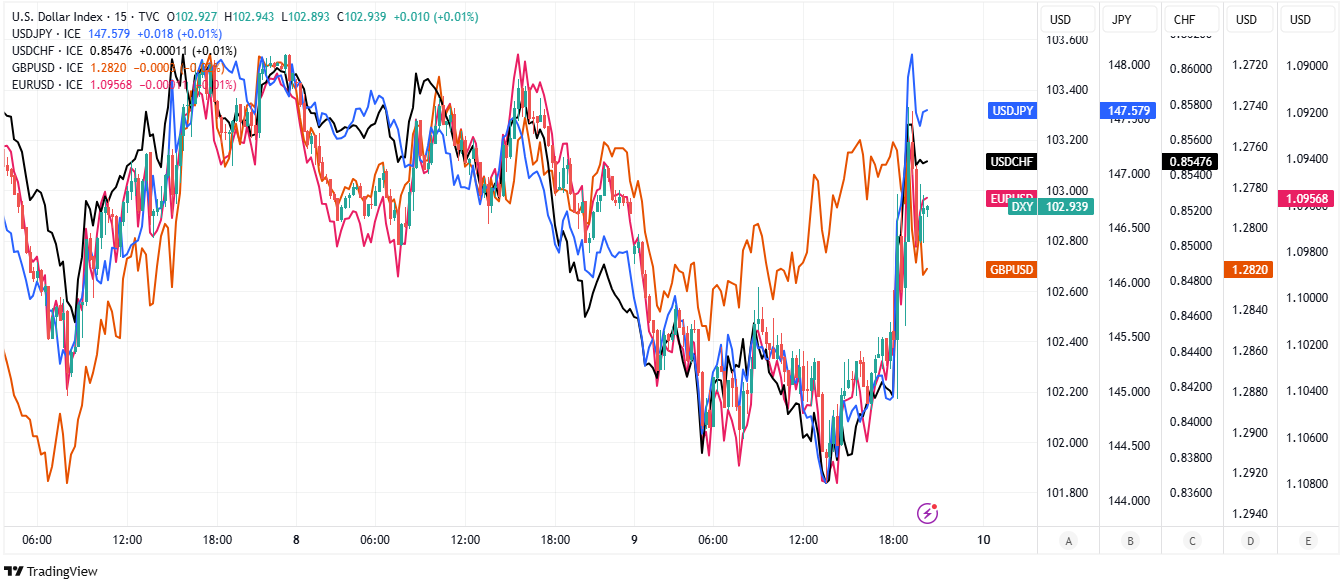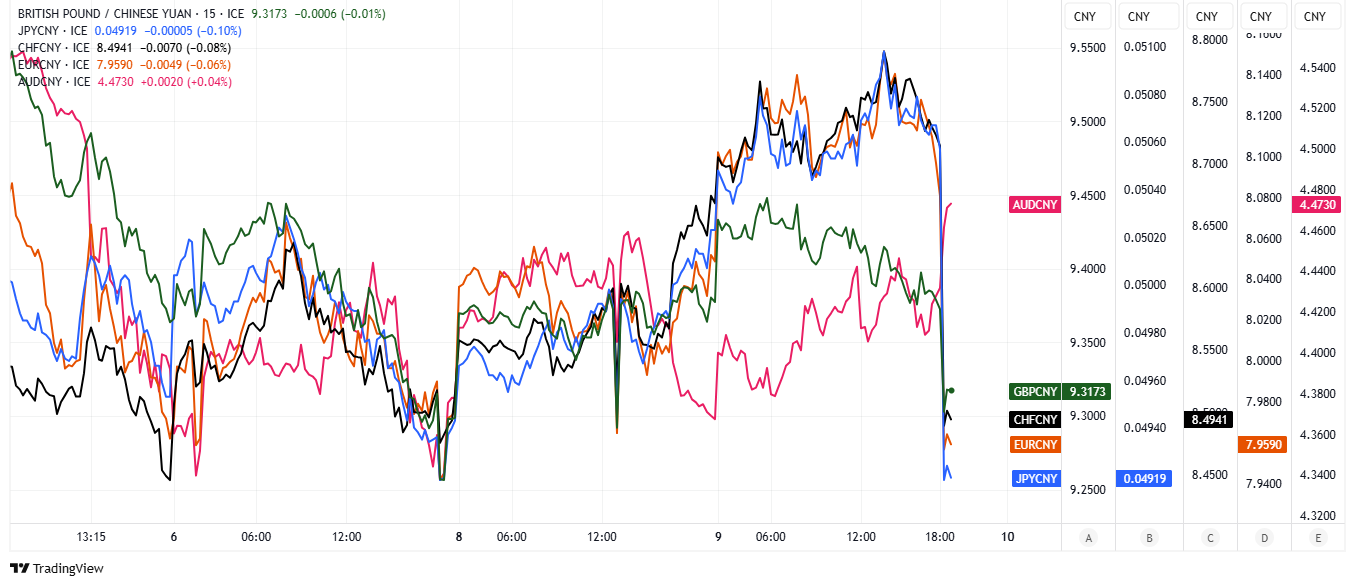
Image: White House Official
The US dollar rallied back from six-month lows against most major counterparts in North American trade on Wednesday after President Donald Trump announced a 90-day delay and a reduction to the reciprocal tariff imposed imports on all other countries from the White House last week.
Safe-havens like the Japanese Yen and Swiss Franc collapsed more than 2.5% against the US Dollar and as much as 5% against the Australian Dollar and others most sensitive to changes in risk appetite, while EUR/USD fell 1.3%, driving an equivalent rally in GBP/EUR and helping lift GBP/USD 0.6% off its prior lows.
GBP/USD unwound earlier losses and rose back above 1.28 to trade 0.4% higher for the day after Trump said in a social media post that earlier announced global reciprocal tariffs would be reduced to 10% with their implementation also delayed for 90 days, but that the tariff on imports from China would rise to 125%.
“It appears Donald Trump cares about what markets think after all,” says Marcus Brookes, chief investment officer at Quilter Investors.
“What happens after this, or during for that matter, is anyone’s guess and as such investors shouldn’t get used to the sugar high markets have reacted with,” he adds.
Above: US Dollar Index with USD/JPY, USD/CHF, and upside down EUR/USD and GBP/USD.
The increase in the tariff on imports from China comes after the Commerce Ministry in Beijing said earlier on Wednesday that it would levy an additional 84% on all imports from the US, with this on top of the additional 34% levy announced in Friday’s retaliation over Trump’s first tariff announcement last Wednesday.
That took China’s total tariff 118% and contributed to continued rout in global equity markets and an unraveling of the US Dollar against almost all of its advanced economy counterparts in losses that favored safe-havens like the yen and franc as much as the Australian and New Zealand Dollars at times.
The earlier unraveling of the greenback came accompanied by broad-based losses for the Chinese Renminbi in price action that may have been mutually reinforcing, given that Beijing’s basket-based approach to its managed-floating exchange rate creates a positive correlation with, if not quasi peg to, the US Dollar.
Losses against the Euro, Yen, Franc and Australian Dollar led EUR/CNY, JPY/CNY, CHF/CNY and AUD/CNY to all overshoot the top of their permissible trading bands for the day repeatedly, inviting and possibly also eliciting intervention aimed at stemming the pace of decline and controlling the depreciation.
This dampened the rallies in EUR/USD, NZD/USD and AUD/USD, while tempering the sell-offs in USD/CHF and USD/JPY, because the EUR/CNY, NZD/CNY, AUD/CNY, CHF/CNY and JPY/CNY pairs are all effectively mechanically-determined derivatives of where and how each currency trades against the US Dollar.
Above: GBP/CNY shown with JPY/CNY, CHF/CNY, EUR/CNY, AUD/CNY. Click for closer inspection.


